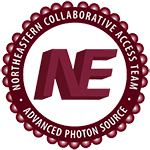Binding of small molecules at the P-stalk site of ricin A subunit trigger conformational changes that extend into the active site.
Publication Type:
Journal ArticleSource:
J Biol Chem, p.108310 (2025)Abstract:
<p>Ricin is a Category B agent for bioterrorism and Shiga toxins are the primary virulence factors of Shiga toxin (Stx) producing E. coli (STEC). Ricin and Stxs bind the ribosomal P-stalk proteins to depurinate the sarcin/ricin loop (SRL) on the eukaryotic ribosome and inhibit translation. Both toxins are prime targets for therapeutic intervention because no effective therapy exists for ricin intoxication or STEC infection. Binding of ricin toxin A subunit (RTA) to the ribosomal P-stalk stimulates depurination of the SRL by an unknown mechanism. We previously identified compounds that bind the P-stalk pocket of RTA and inhibit catalytic activity. Here we characterize a second-generation lead compound, which binds the P-stalk pocket of RTA with over 30-fold improved affinity relative to the original compound and inhibits the cytotoxicity of ricin holotoxin in Vero cells with no apparent cellular toxicity by itself. This compound also shows protection against Stx2A1. X-ray crystal structure of RTA-inhibitor complexes suggests that the orientation of the carboxylic acid influences the inhibitor contacts at the P-stalk site of RTA and contributes to inhibitor potency. The structural changes triggered at the P-stalk site of RTA were validated by solution NMR based chemical shift perturbation analysis. A key finding by NMR is that binding induced conformational changes extend beyond the P-stalk site to residues in the active site cleft of RTA. Collectively, these results provide valuable new insight into the conformational flexibility in the C-terminal domain of RTA and its potential role in mediating the remarkable catalytic activity of ricin.</p>
